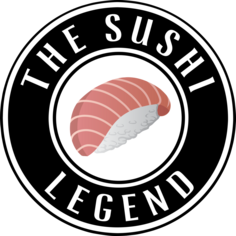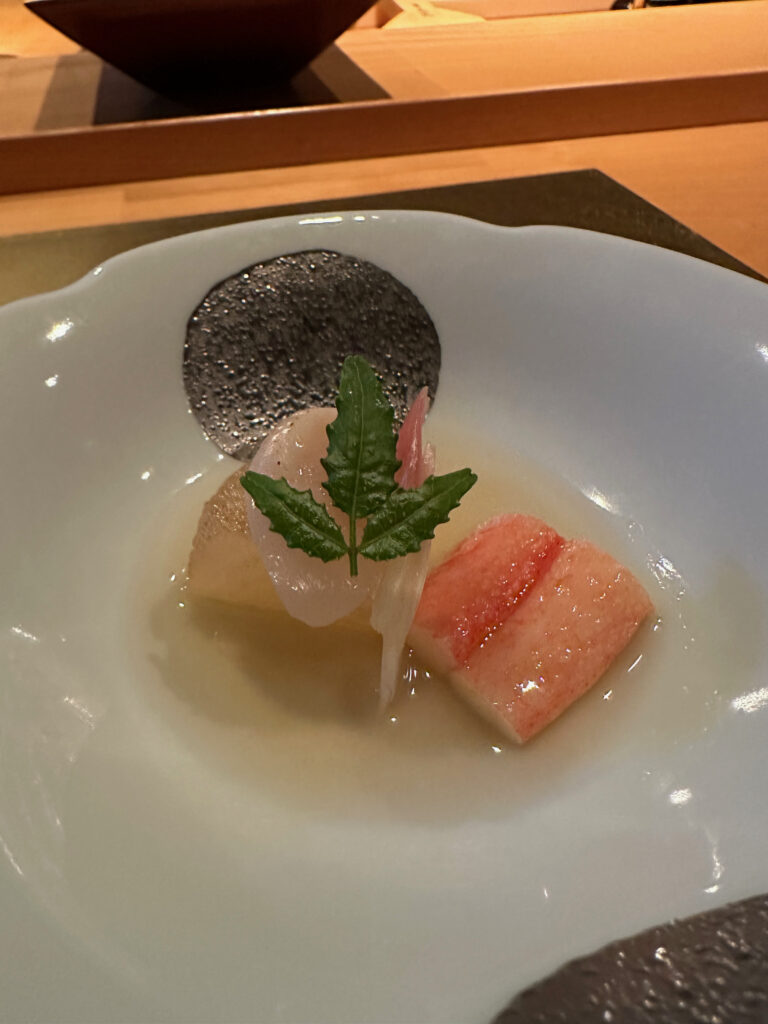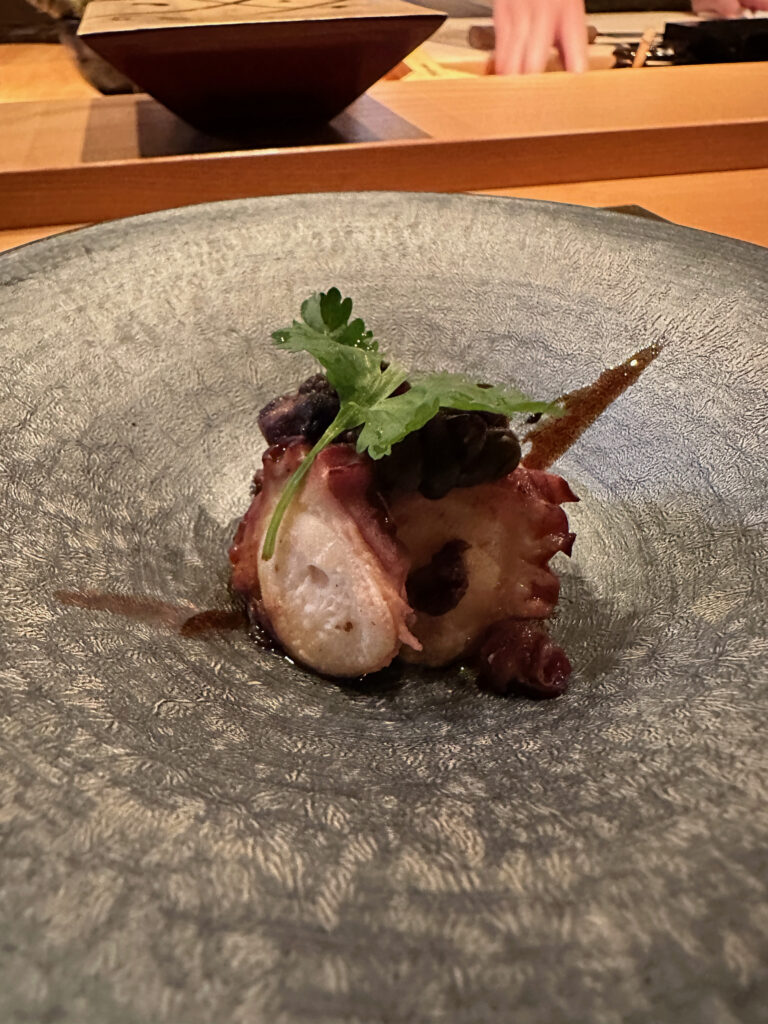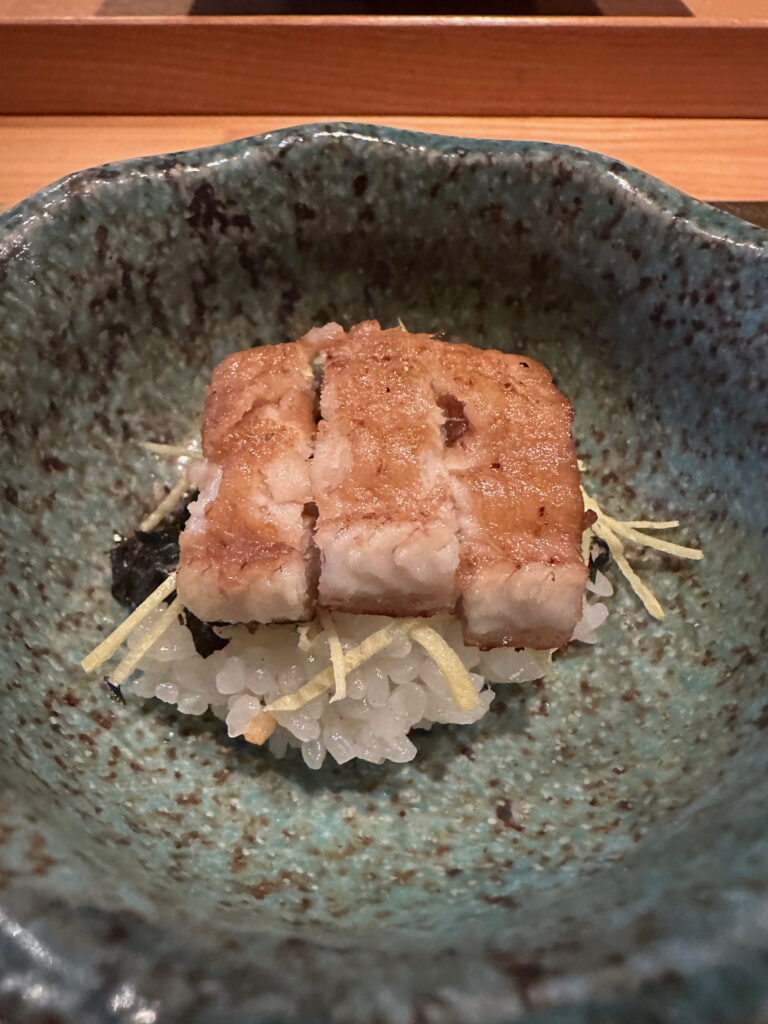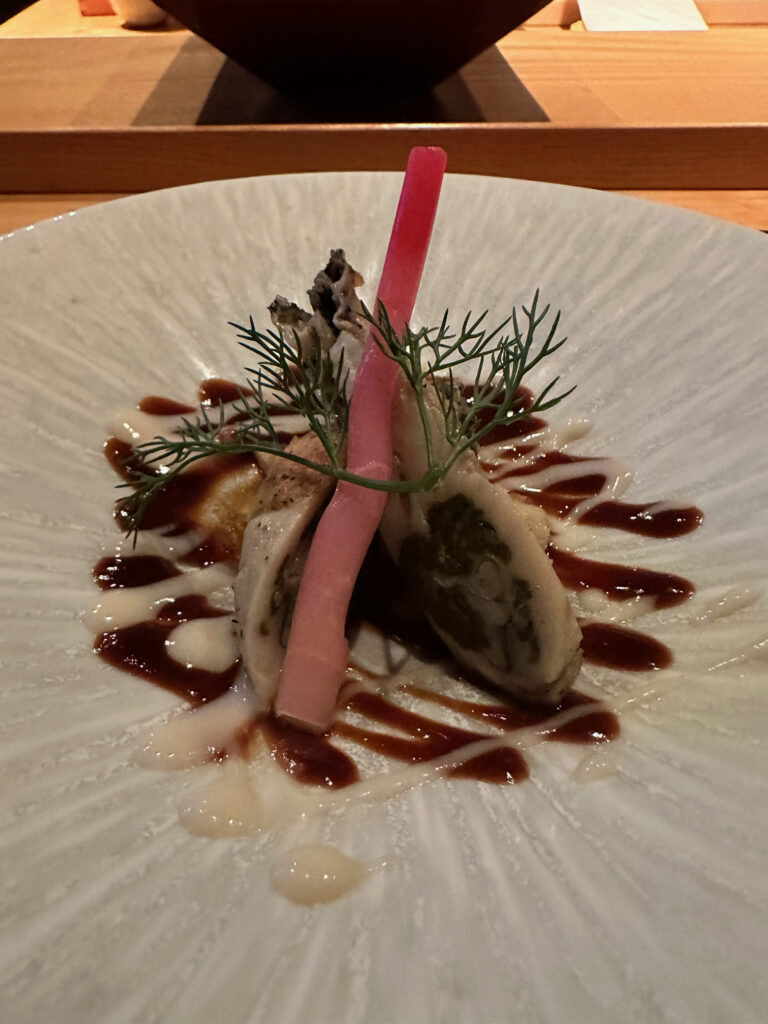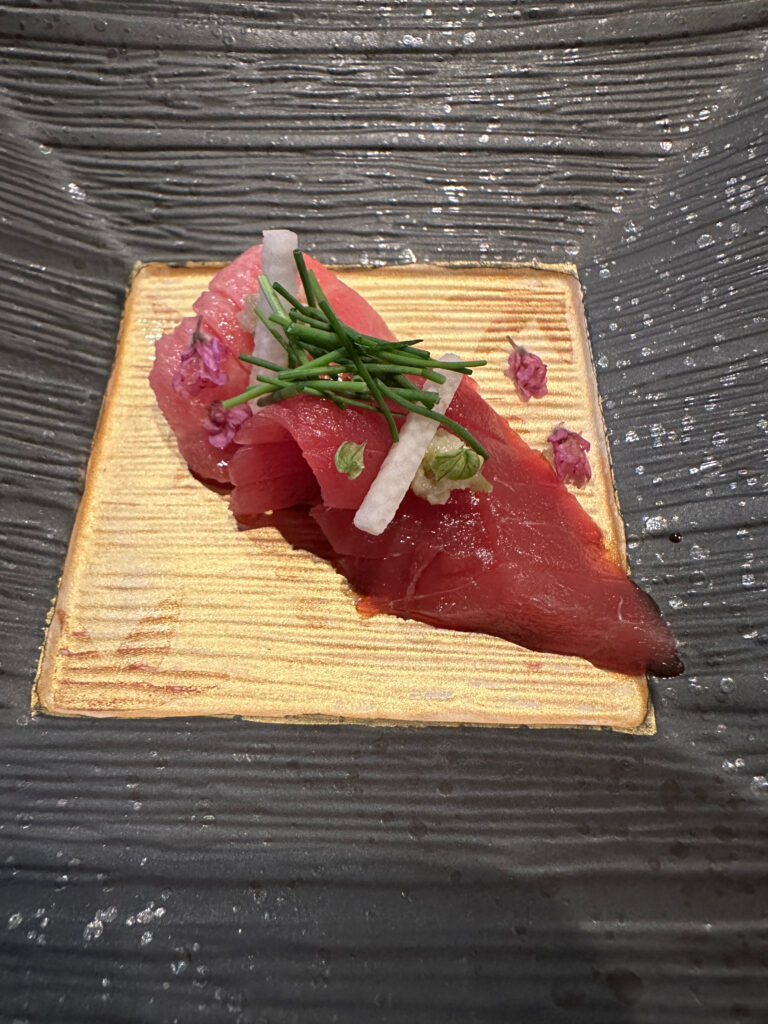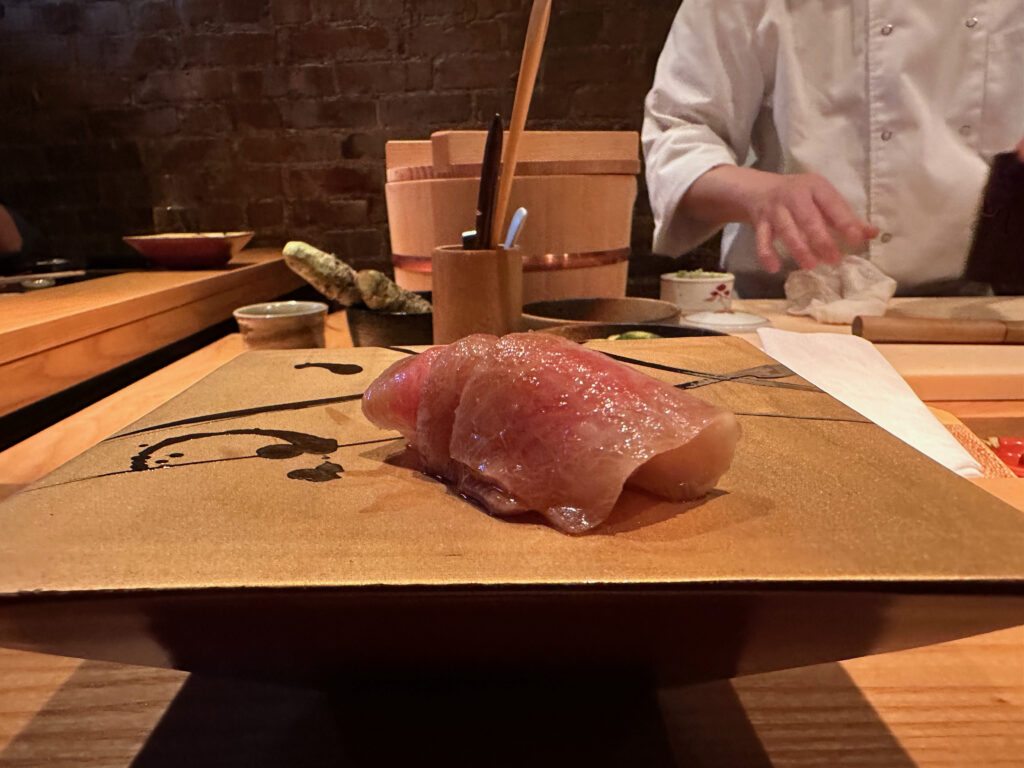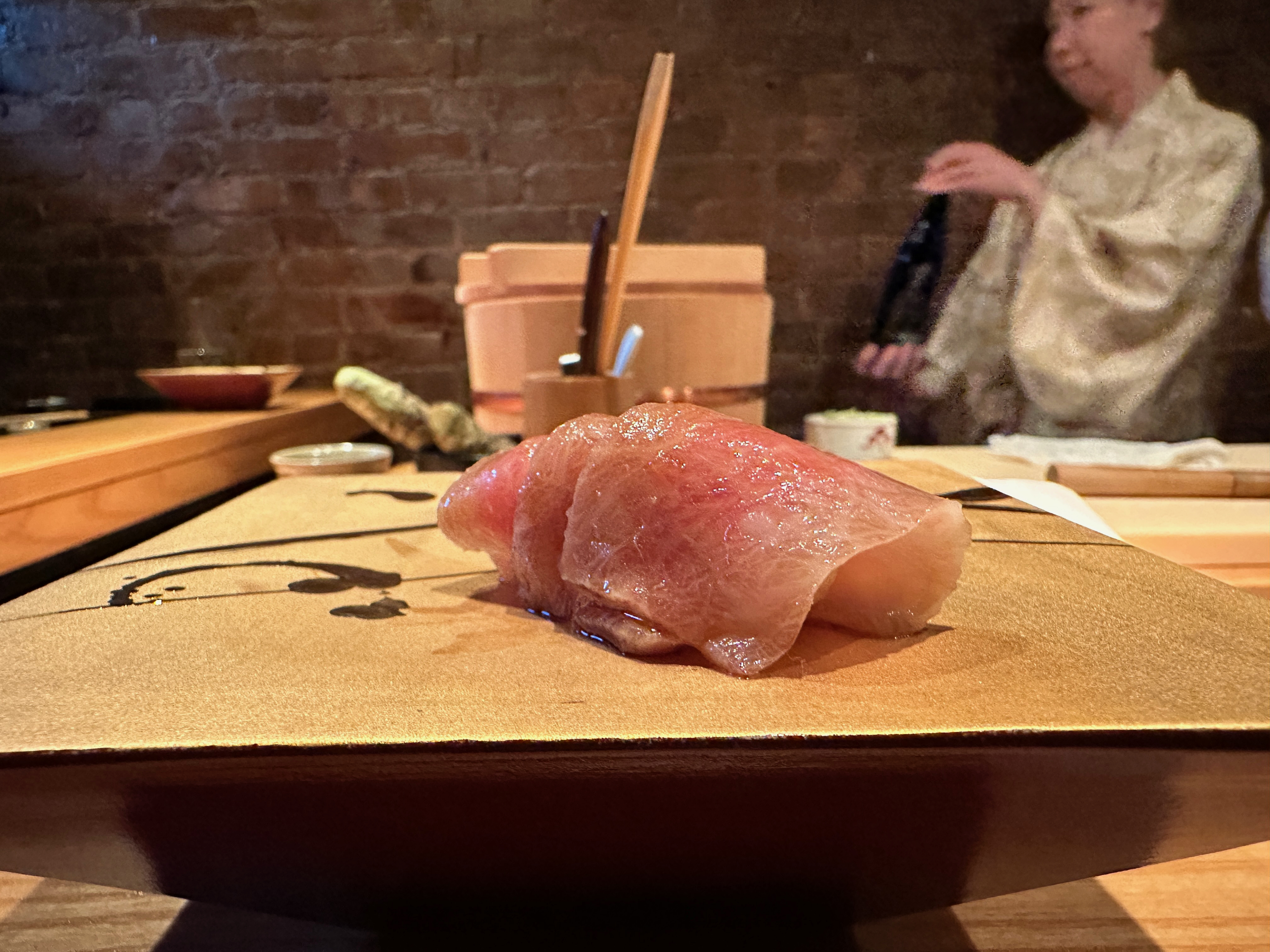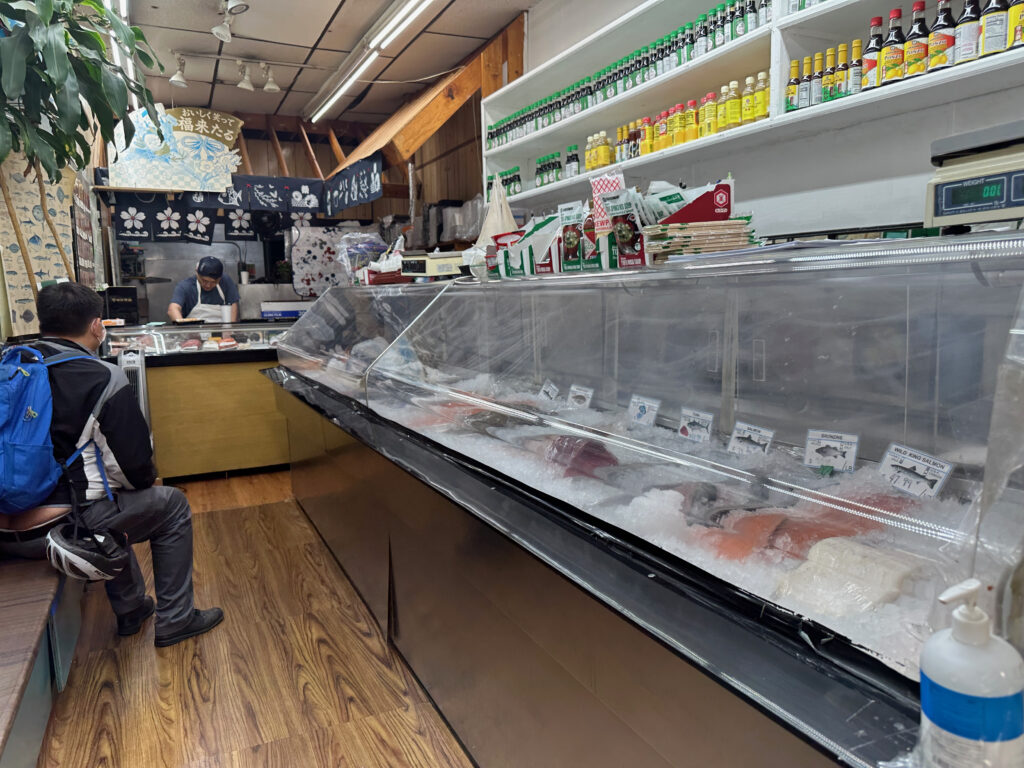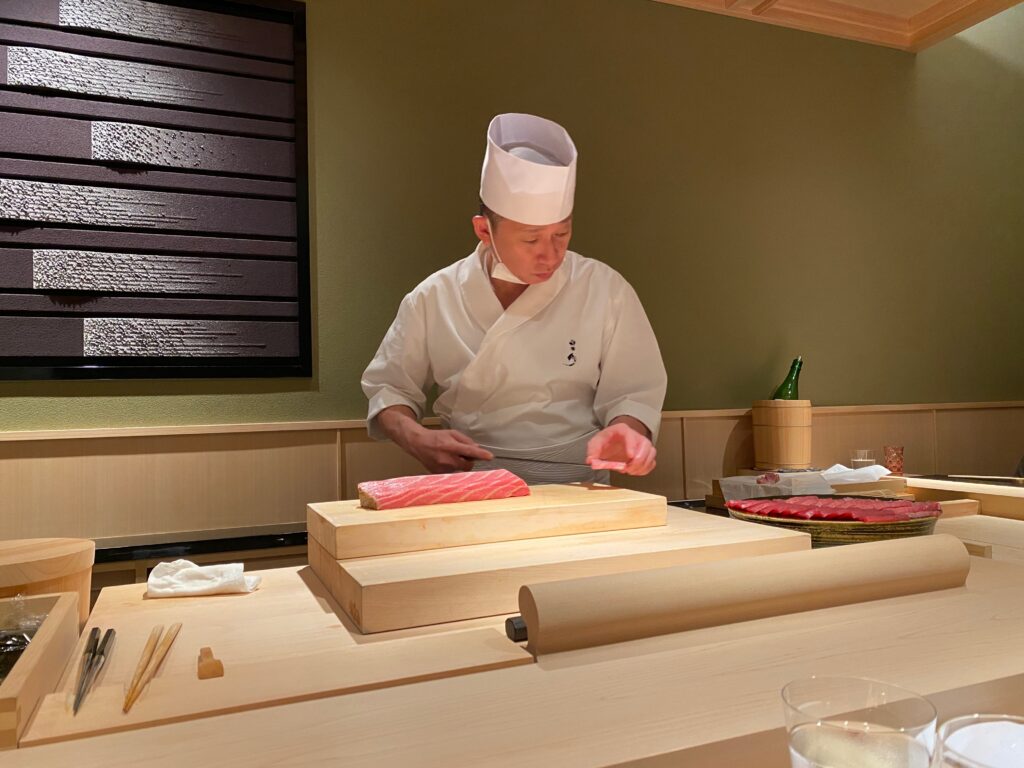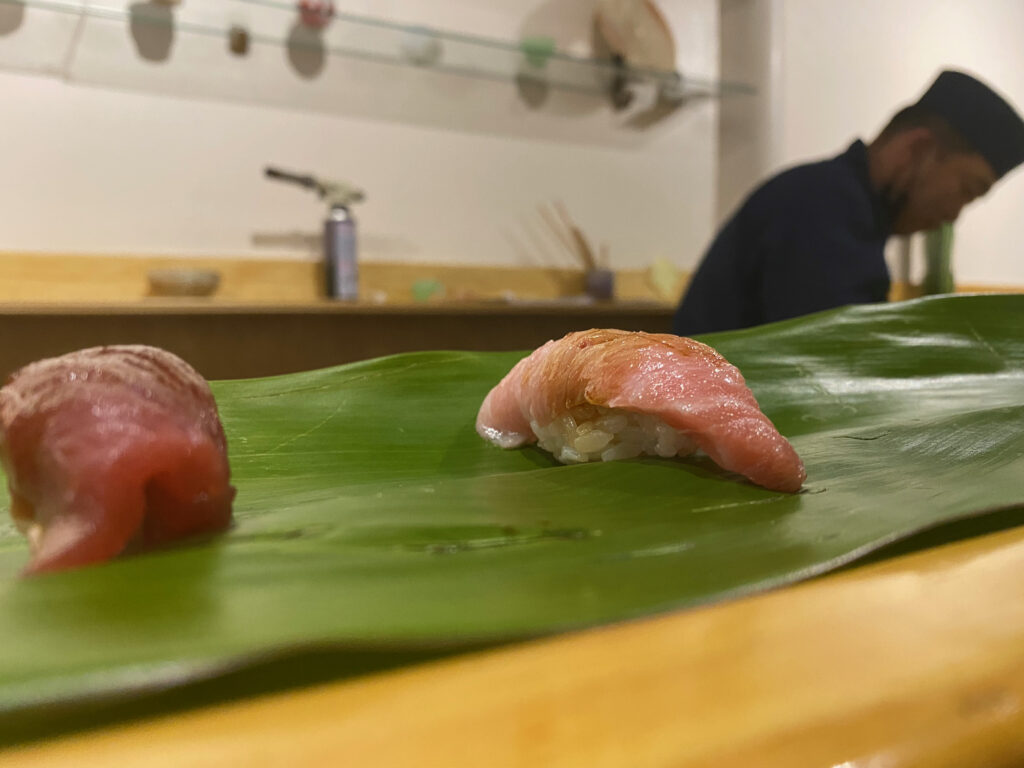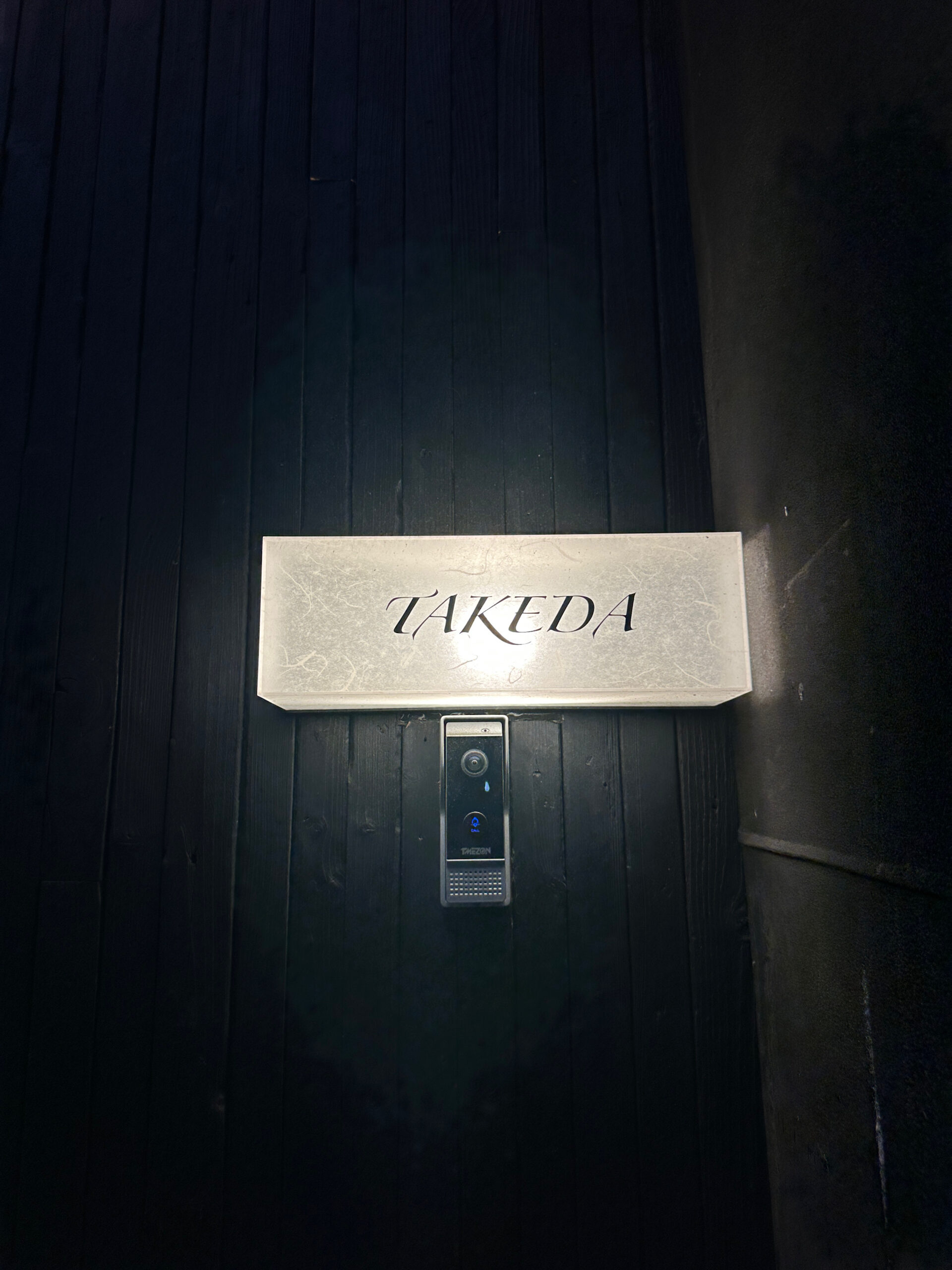
Outside Takeda’s Upper West Side location. Ring the doorbell for access.
A grand return
Takeda opened its Upper West Side doors in 2019, and like any darling four-year-old, its still finding its way in a crowded world (aka the sushi scene in New York).
That’s no fault of its own: Takeda is fantastic. I loved my visit in early 2020 (reviewed here), and recently returned for a 90 minute round 2 at a sushiya that’s only gotten better.
But for whatever reason – there are a million sushiya in NYC, the city shutdown for 2 years, Eater forgot to do a YouTube profile on Itamae Takeda Yukihiro – Takeda continues to fly under the radar. But it won’t for long.
That’s first and foremost because of the team that runs it. Takeda-San himself, a 30-year veteran of the New York City sushi scene, and his wife, Satomi Tanaka, an owner who is everpresent during the Omakase itself.
Both are resolutely focused on seasonality, especially from Japan’s Ishikawa and Toyama Prefectures, home to Kanazawa, Toyama Bay and, more importantly, Toyama itself, where Satomi herself is from. During our May visit, that meant Zuwaigani, Botan Ebi, Hotaru Ika and more local delicacies were on the menu.
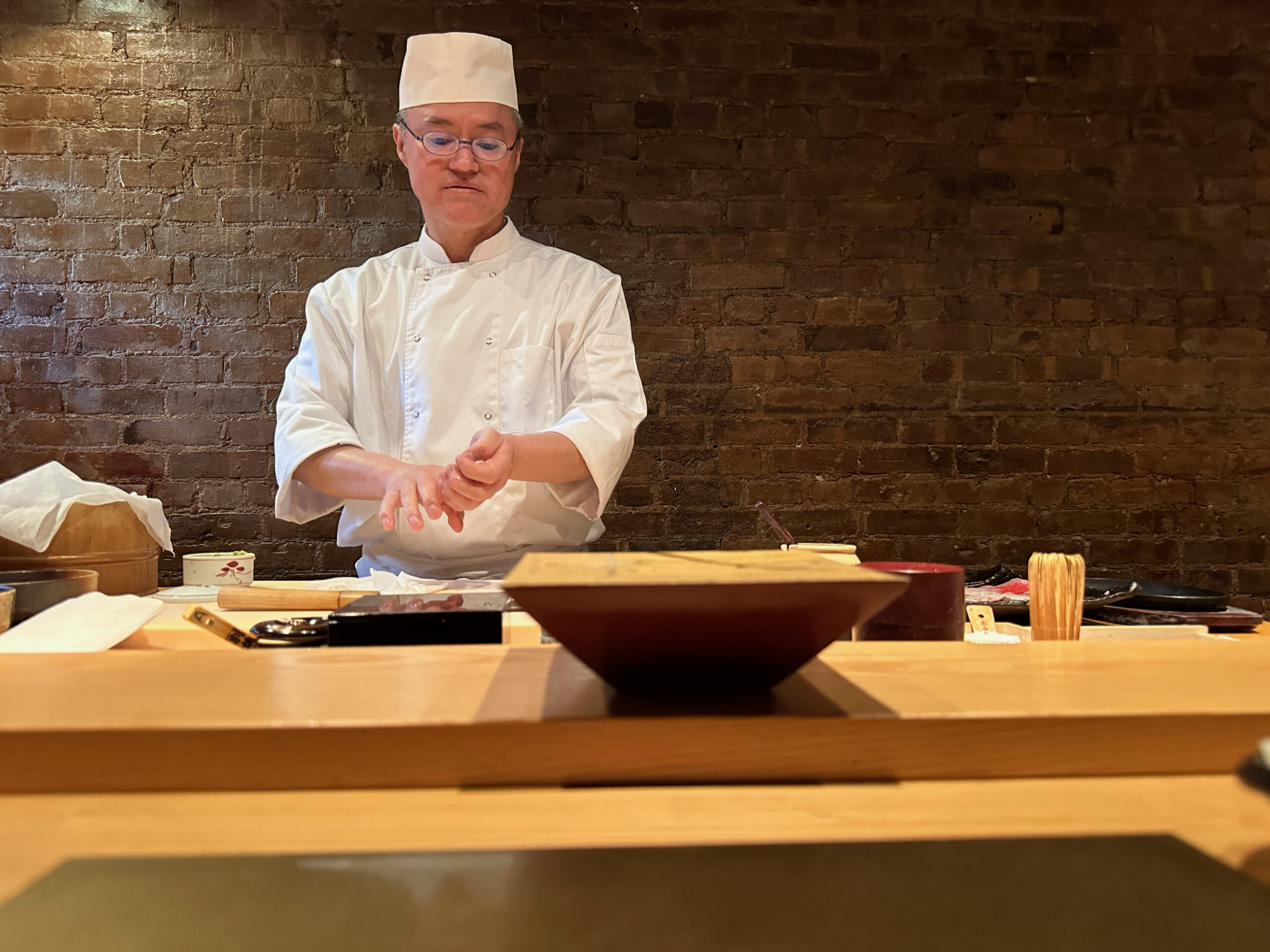
The legend himself
Takeda is Omakase-only
This would have sounded crazy a decade ago, but the $250 price tag is comparatively reasonable thanks to supply chain relationships that Takeda has in Japan.
Those relationships also drive the quality of the seafood Shari (vinegared rice) and vegetables, all of which in turn drive returns; on the night I visited, both other parties at the 10 seat counter were repeat customers.
That quality was apparently immediately with the three initial small-bite courses, specifically the impeccably soft Zuwaigani (snow crab), sourced from the area surrounding Wakasa Wan (Bay), nearby Fukui, Kyoto and Ishikawa Prefectures (are you seeing the pattern?).
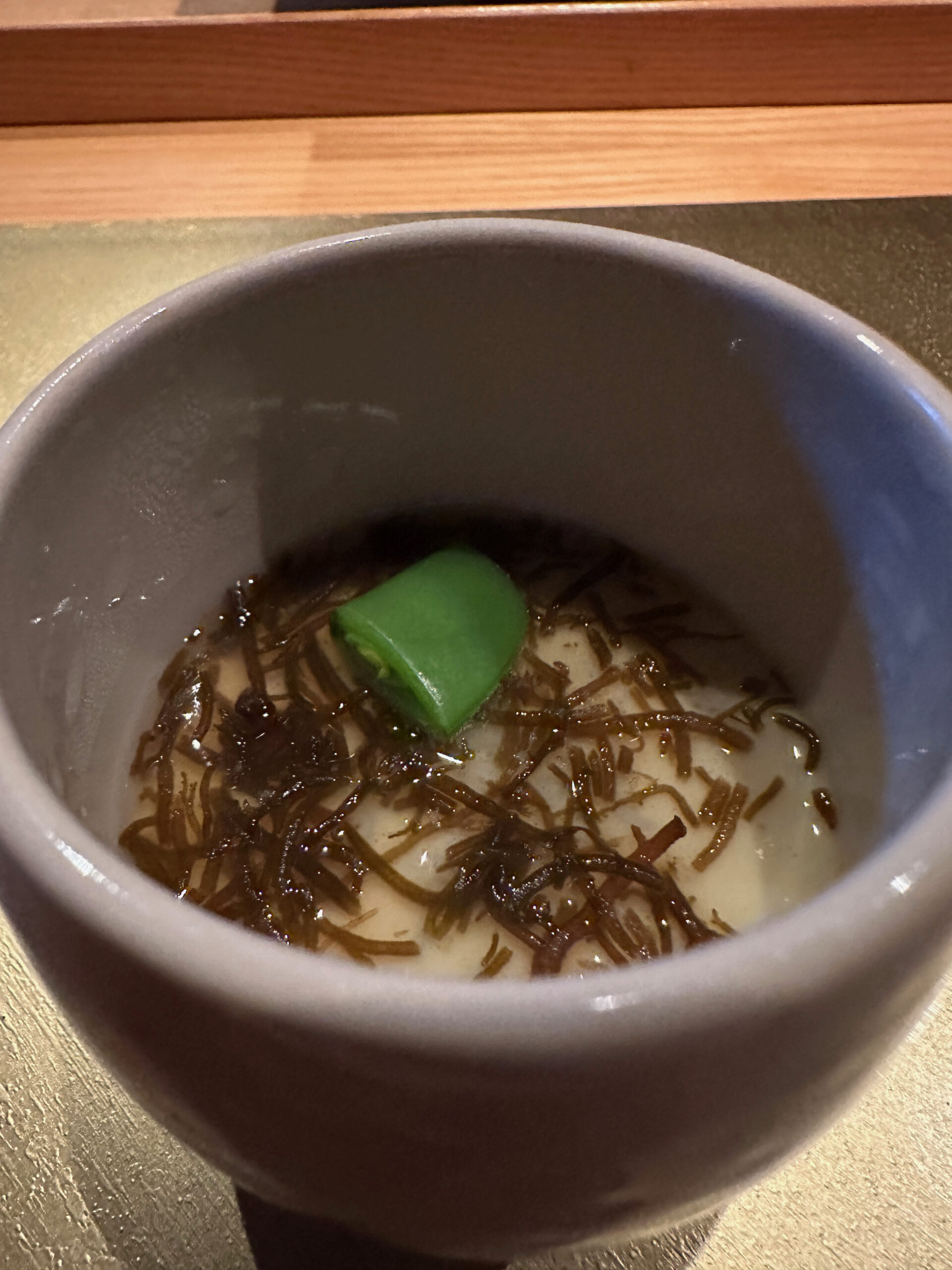
1: Chawanmushi with Baby Anchovy, Mozuku Seaweed and a Snow Pea
The Nigiri procession starts with Kinmedai
The Pink Lady you see below is delicious, but I want to draw your eyeballs to what you don’t see: scorch marks.
That’s because Takeda-san Ignores what I assume at this point must be a law among sushiya to blowtorch Kinmedai. Good for him, and good for us, unless of course you’re a crazy person that enjoys the chemical aftertaste (you shouldn’t).
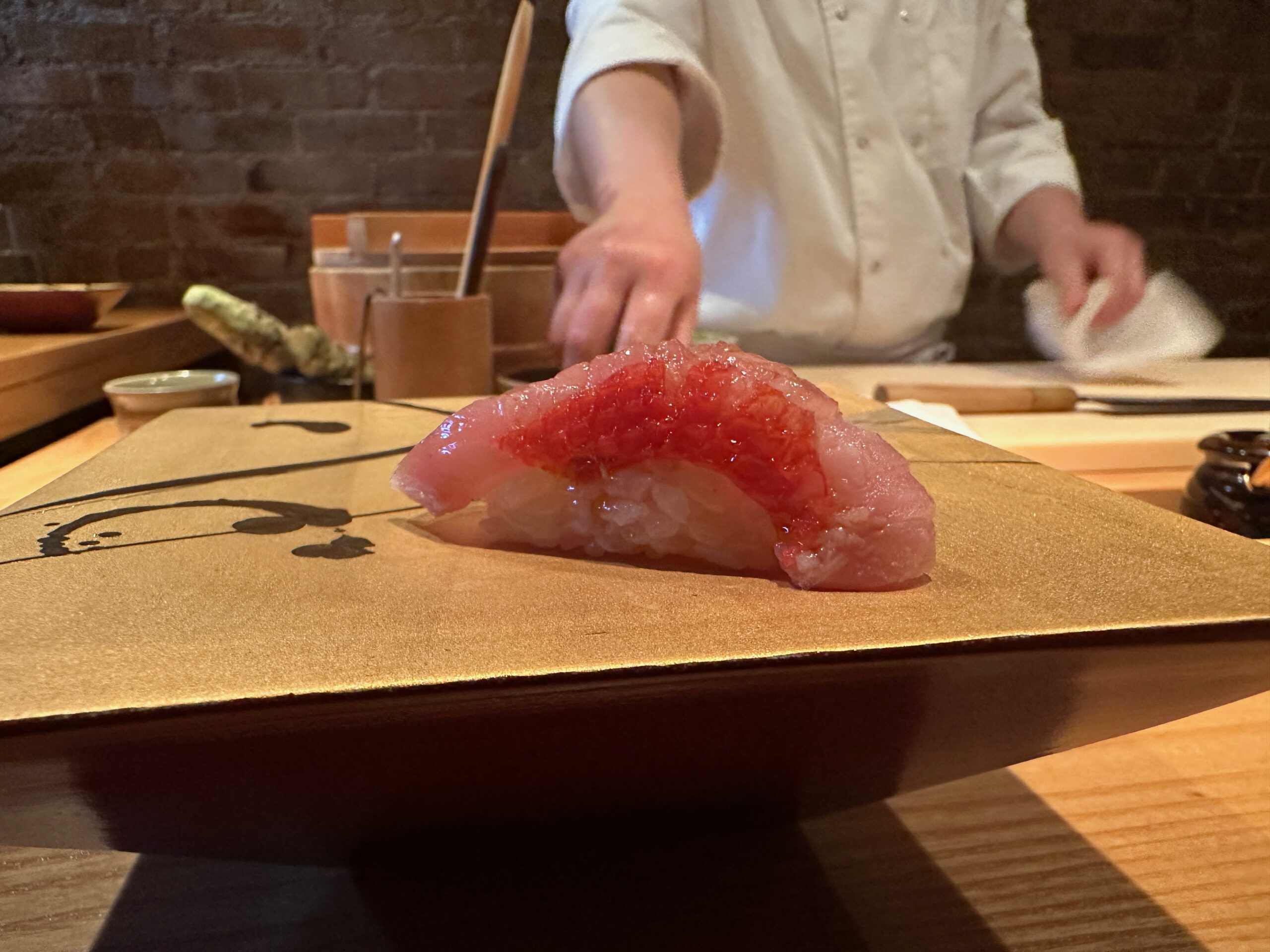
4: Kinmedai (Goldeneye Snapper)
The Botan Ebi is another example of a strong supply chain. In season starting in early spring, it’s also called Toyama Ebi, because it’s caught primarily in Toyama Bay, which borders Toyama (duh) about an hour by train from Kanazawa.
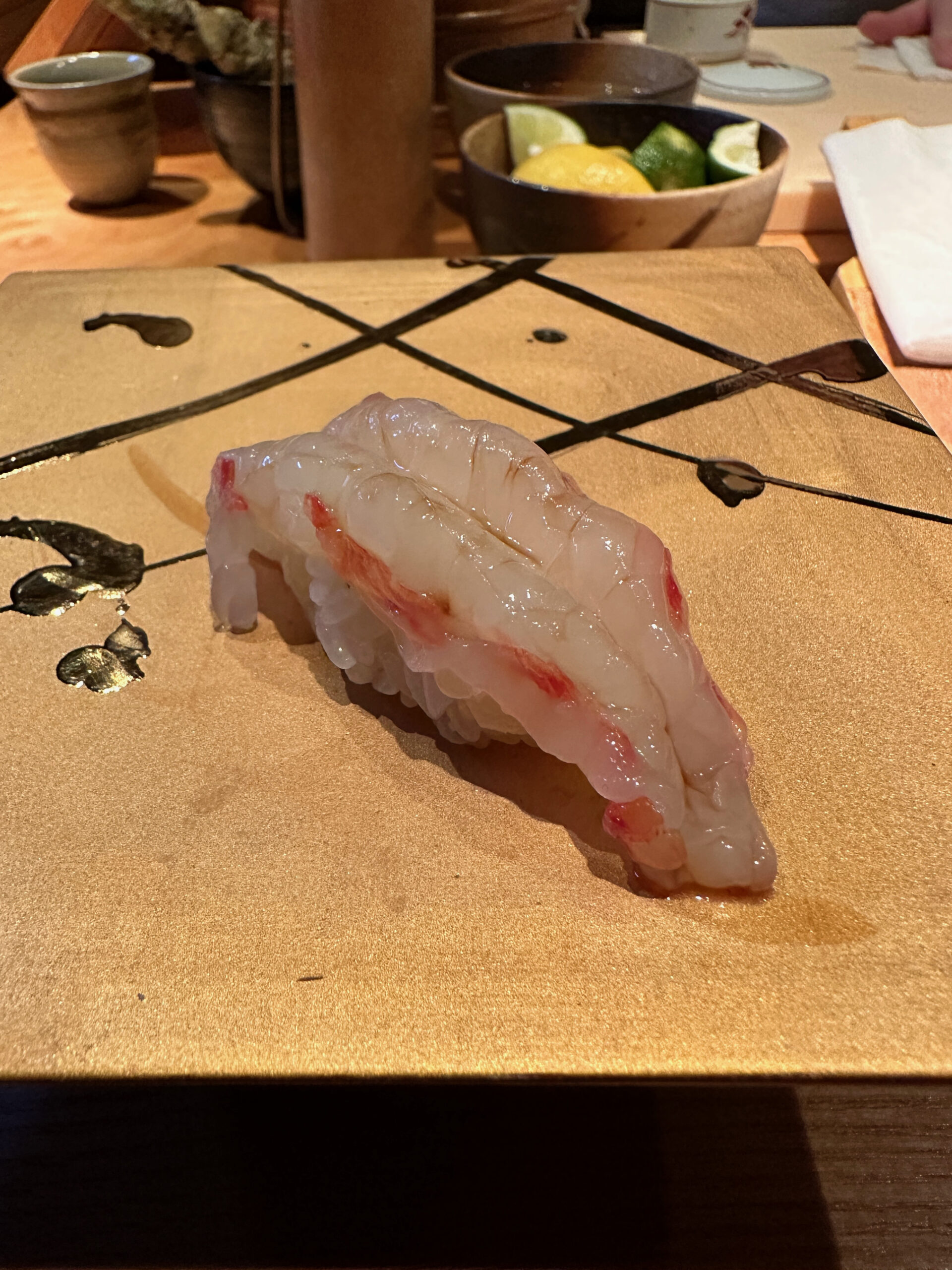
5: Botan Ebi

6: Aji (Horse Mackerel)
I always look for this on Takeda’s menu…
Though the menu at Takeda frequently changes, there is usually one constant: the Kobashira, the adductor muscle of the Aoyagi (orange clam). These are served at Takeda as Gunkanmaki (battleship style), as Is typical, though the larger kind – referred to as Oboshi – can also be served layered as more typical nigiri.
Kobashira are often mislabelled on the internet as Bay Scallops, but these somewhat crunchy beauties are true delicacies that every sushi fanatic should try at least once.
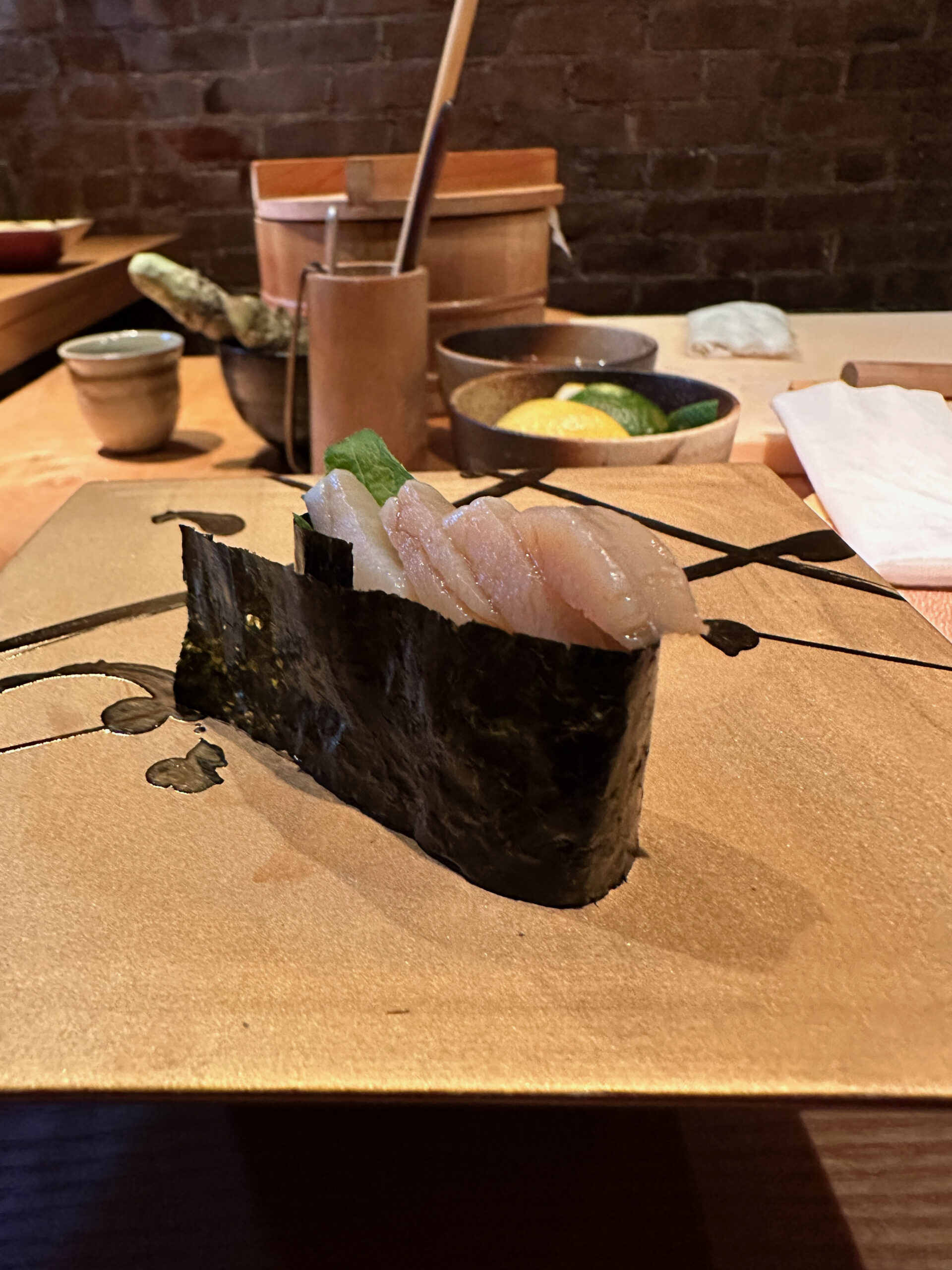
7: Kobashira (Aoyagi Adductor Muscle)
Let’s talk about Ayu (Japanese Sweetfish)
The appearance of Ayu – a freshwater fish rarely seen on menus in North America – is another example of the evolution of Takeda’s Omakase since I visited in 2019.
That’s because Ayu is traditionally served grilled and whole, as it was here (see below), and sometimes that can be offputting for rookies. But this is a menu brimming with the confidence that comes from succeeding through a significant existential event, and serving the Ayu with gingko nuts and cauliflower paste was one of my favourite bites of the evening.
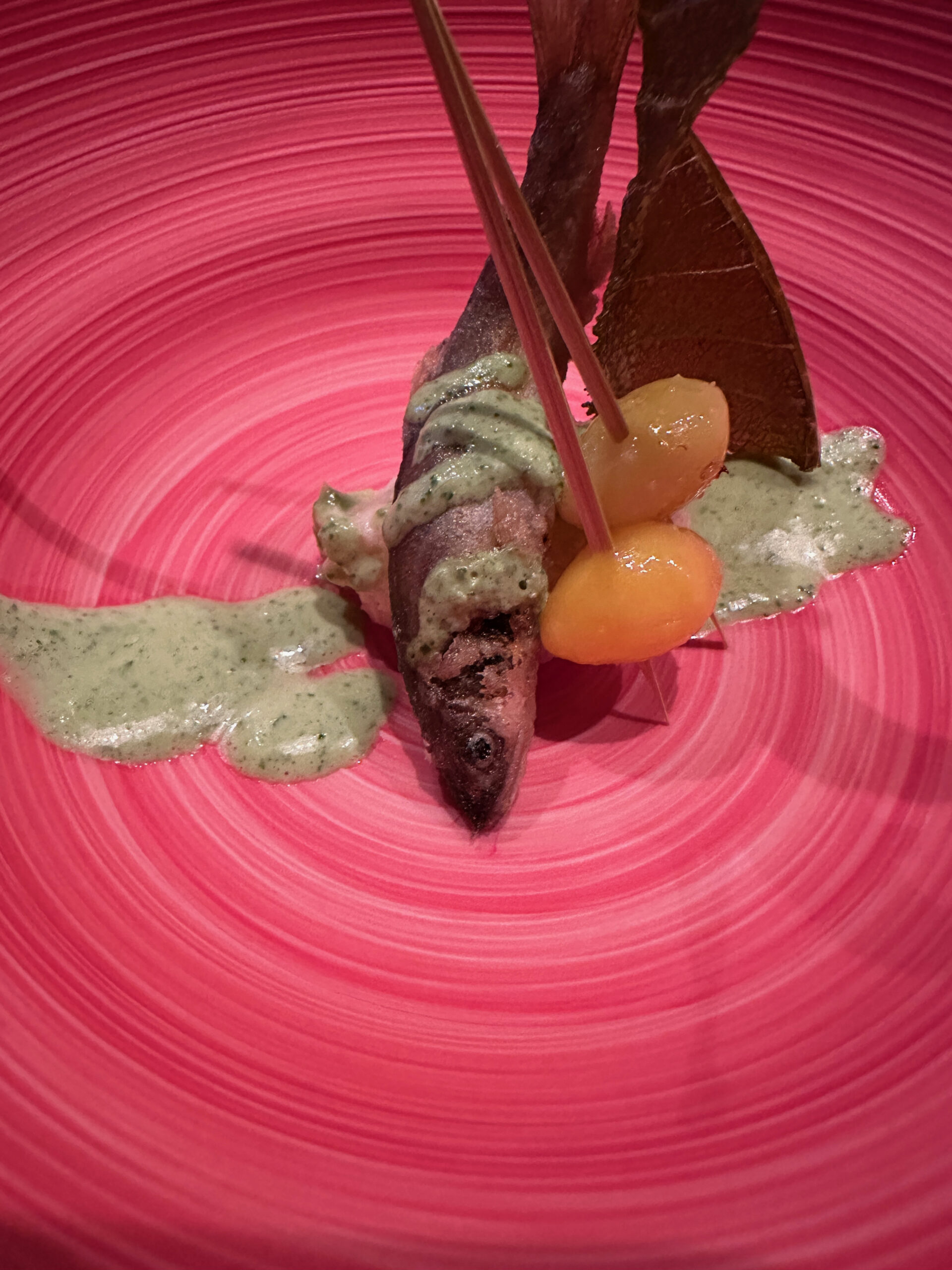
11: Ayu (Sweetfish) with Gingko nuts and cauliflower paste
Takeda is unique in one regard
Unlike nearly every Omakase in New York City, but like many of the finest sushiya in Japan, Takeda jumps back and forth between sushi and non-sushi courses.
Case in point: the Ayu was followed by the triple-layered Kama Toro, an extraordinarily fatty cut from the jaw/collar area of the honmaguro (bluefin tuna). Shout out Steve Jobs because you can practically see the fatty oils oozing off the nigiri below.
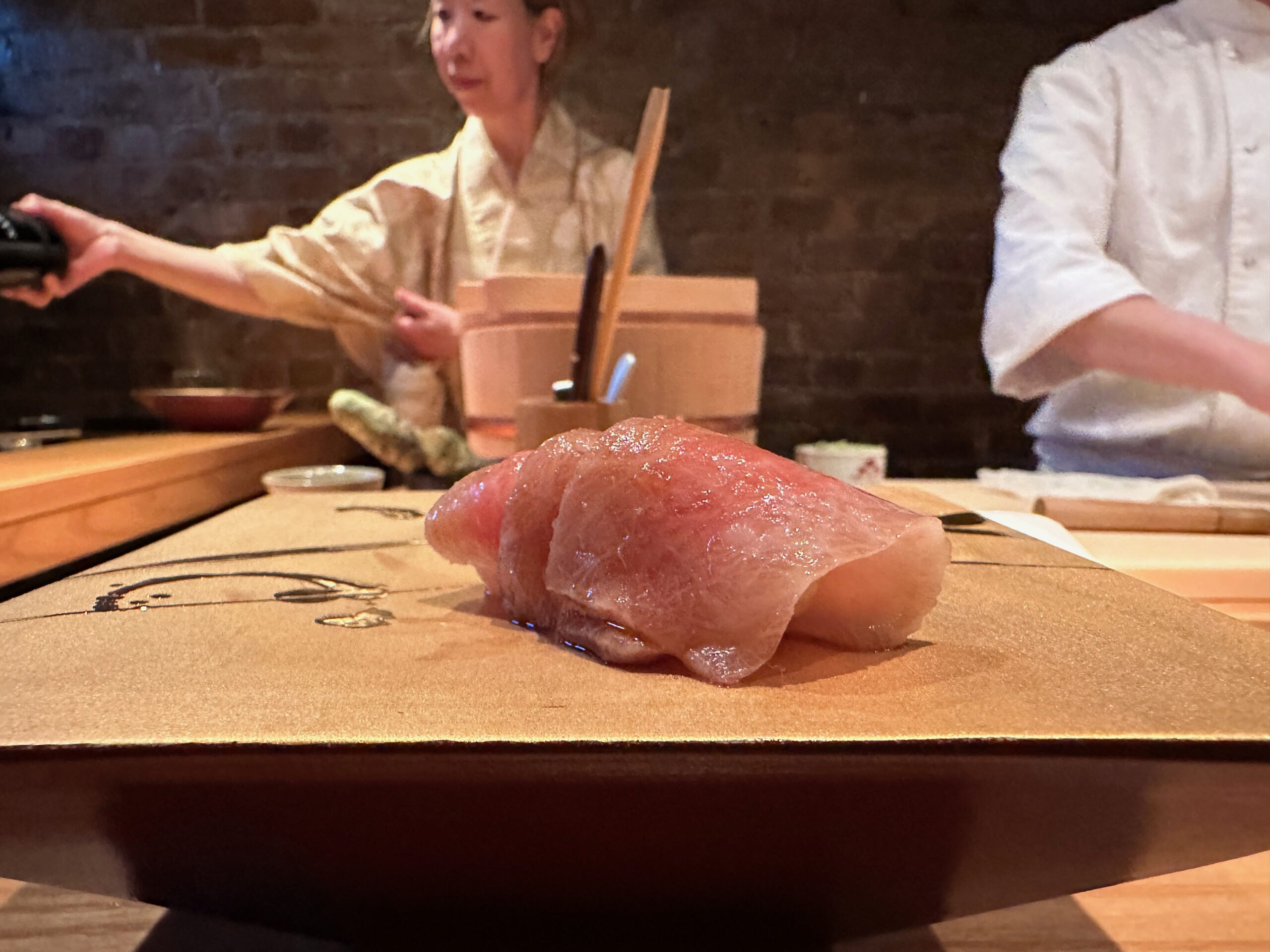
12: Kama Toro (Aged 2 weeks)
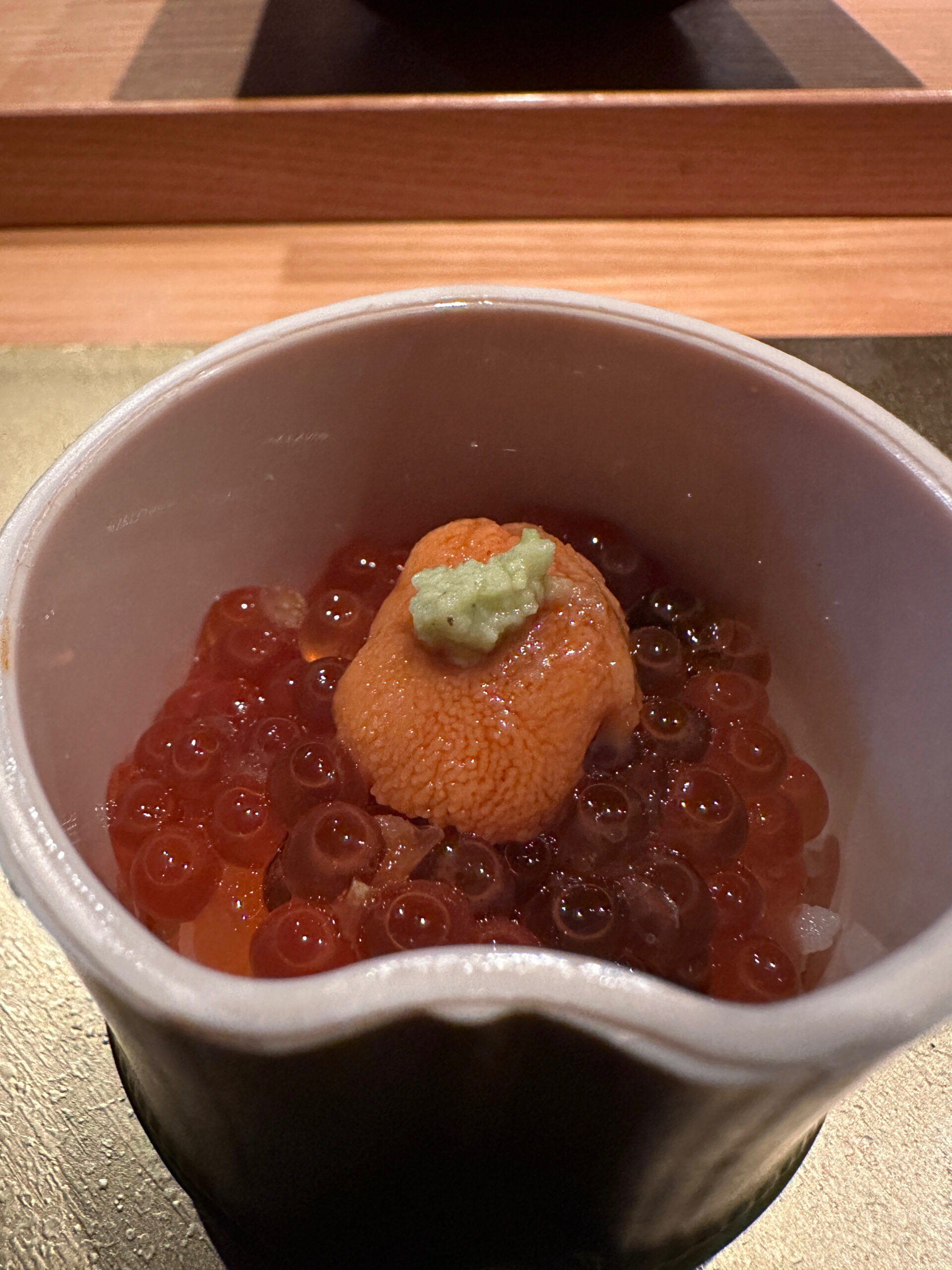
13: Uni Ikura don
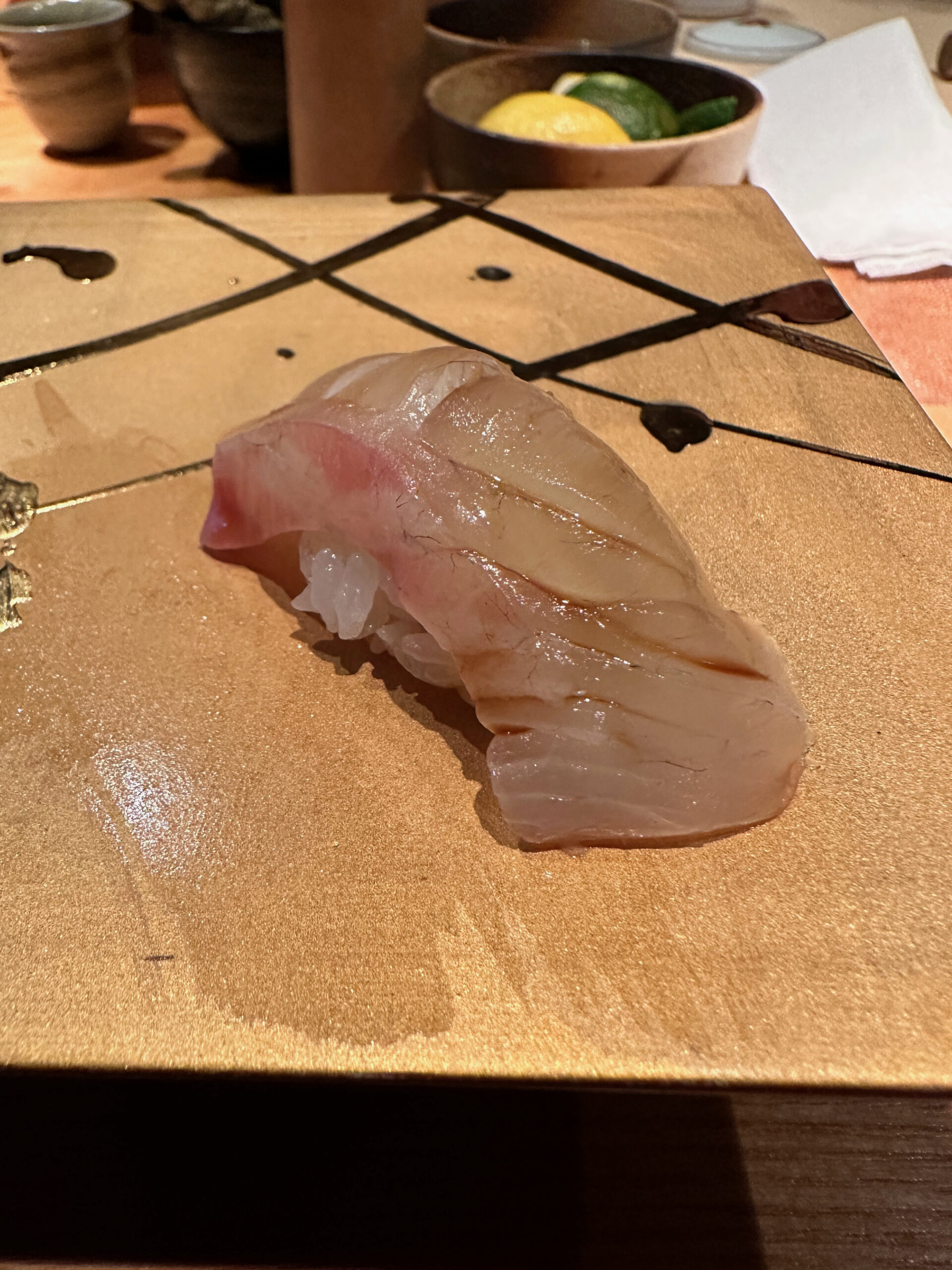
14: Madai
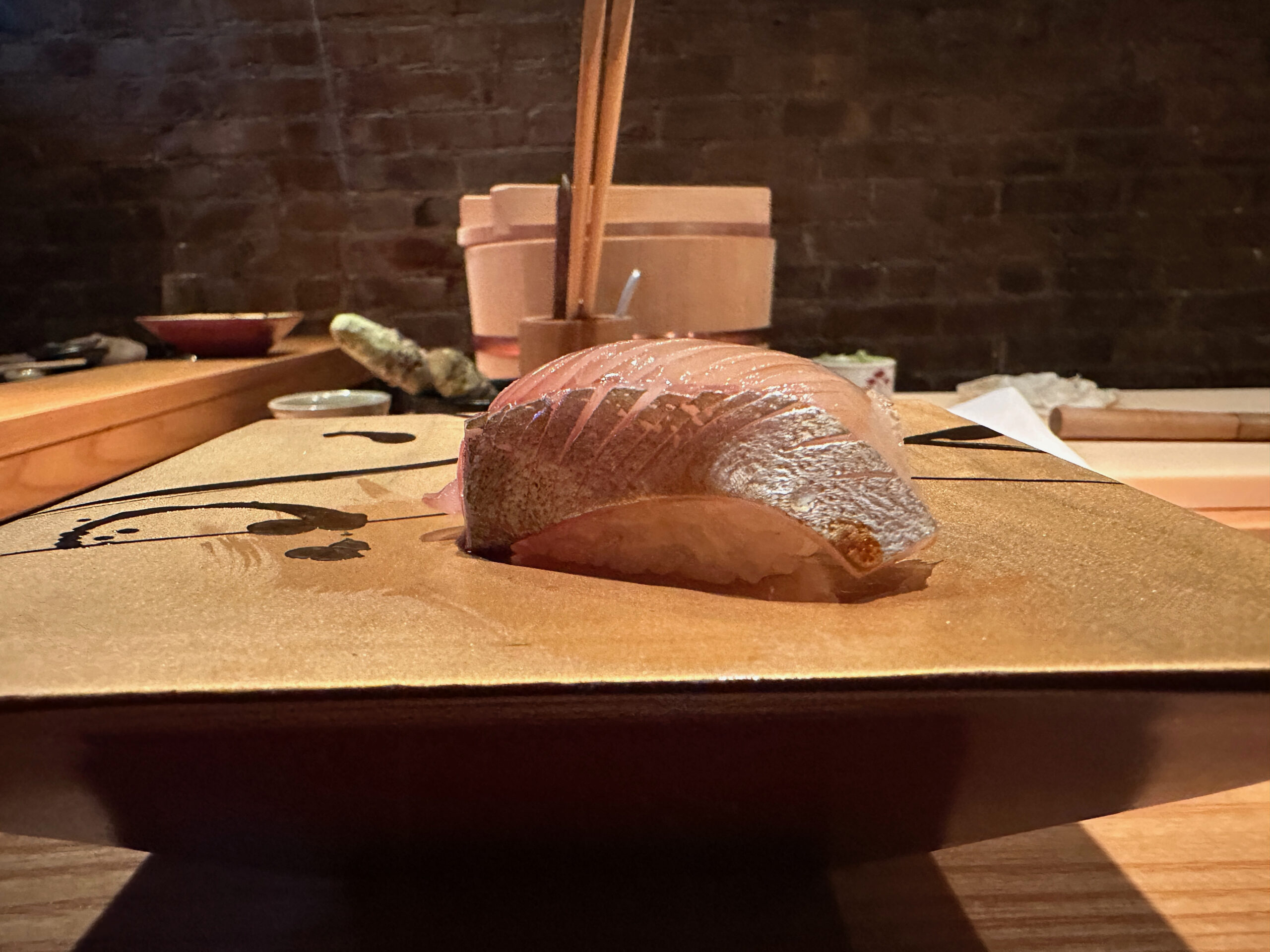
15: Shima Aji

Shima Aji again
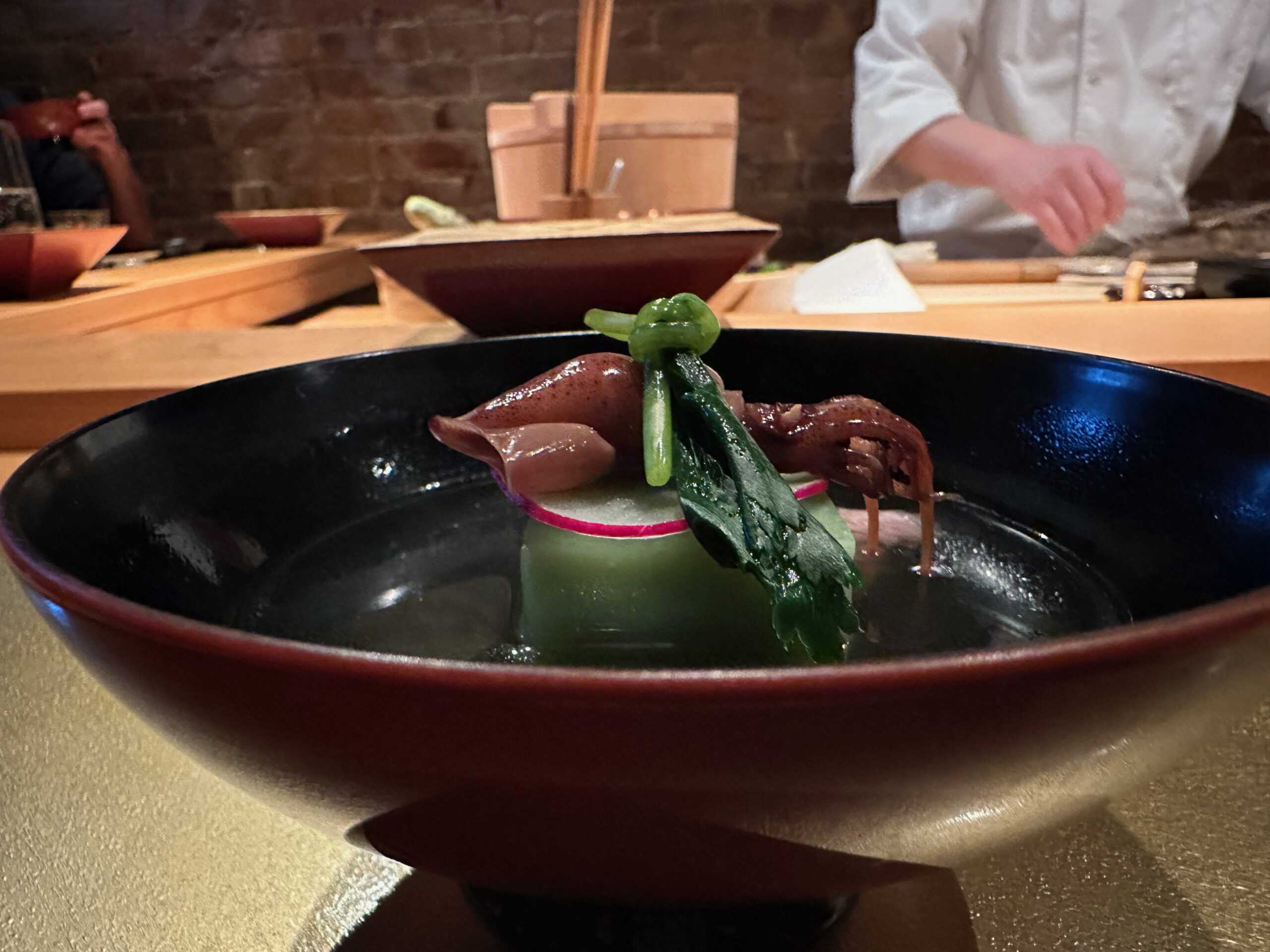
16: Hotaru Ika (firefly squid) with “Broad Beans Tofu”
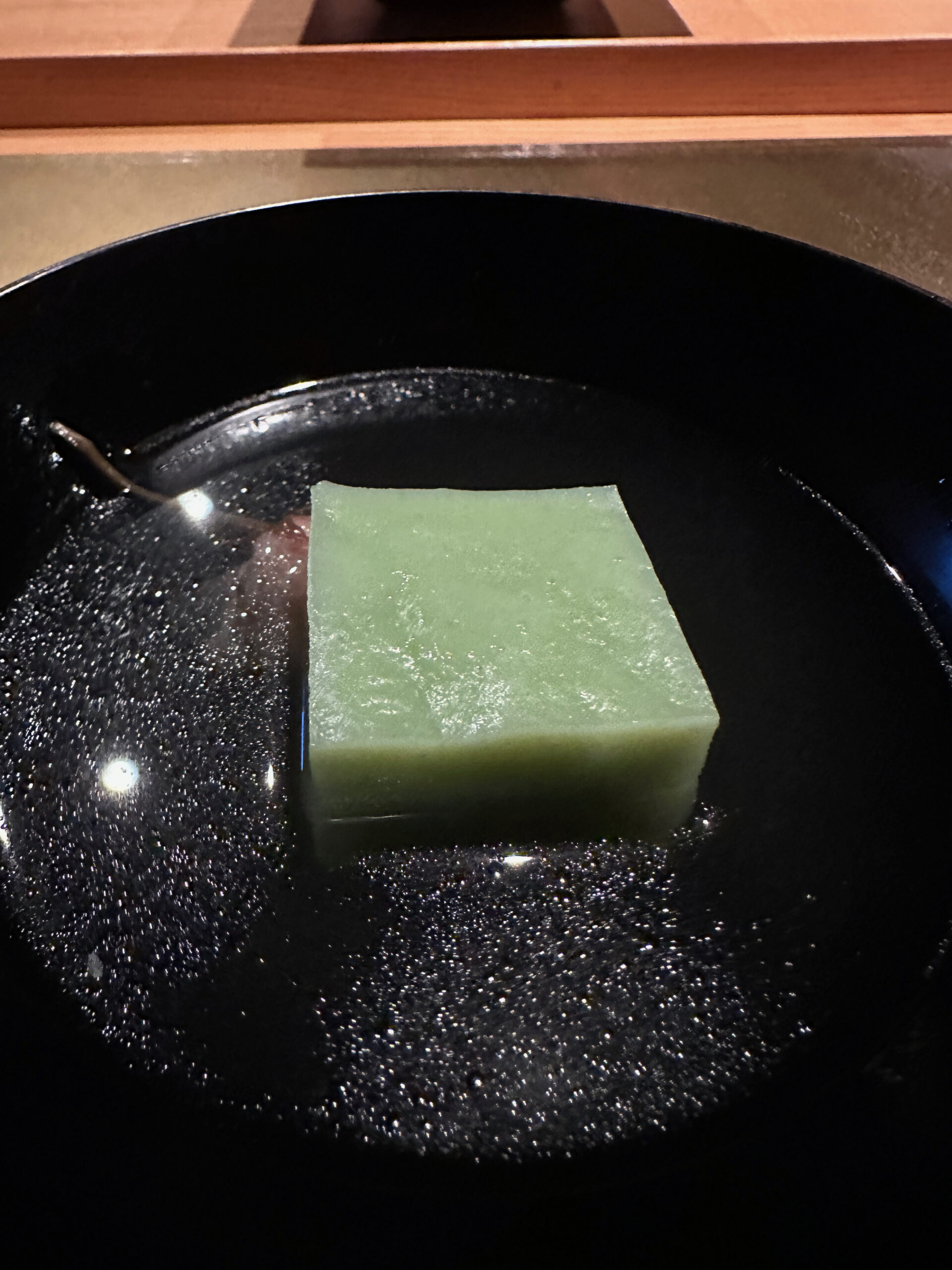
Another angle of the Tofu
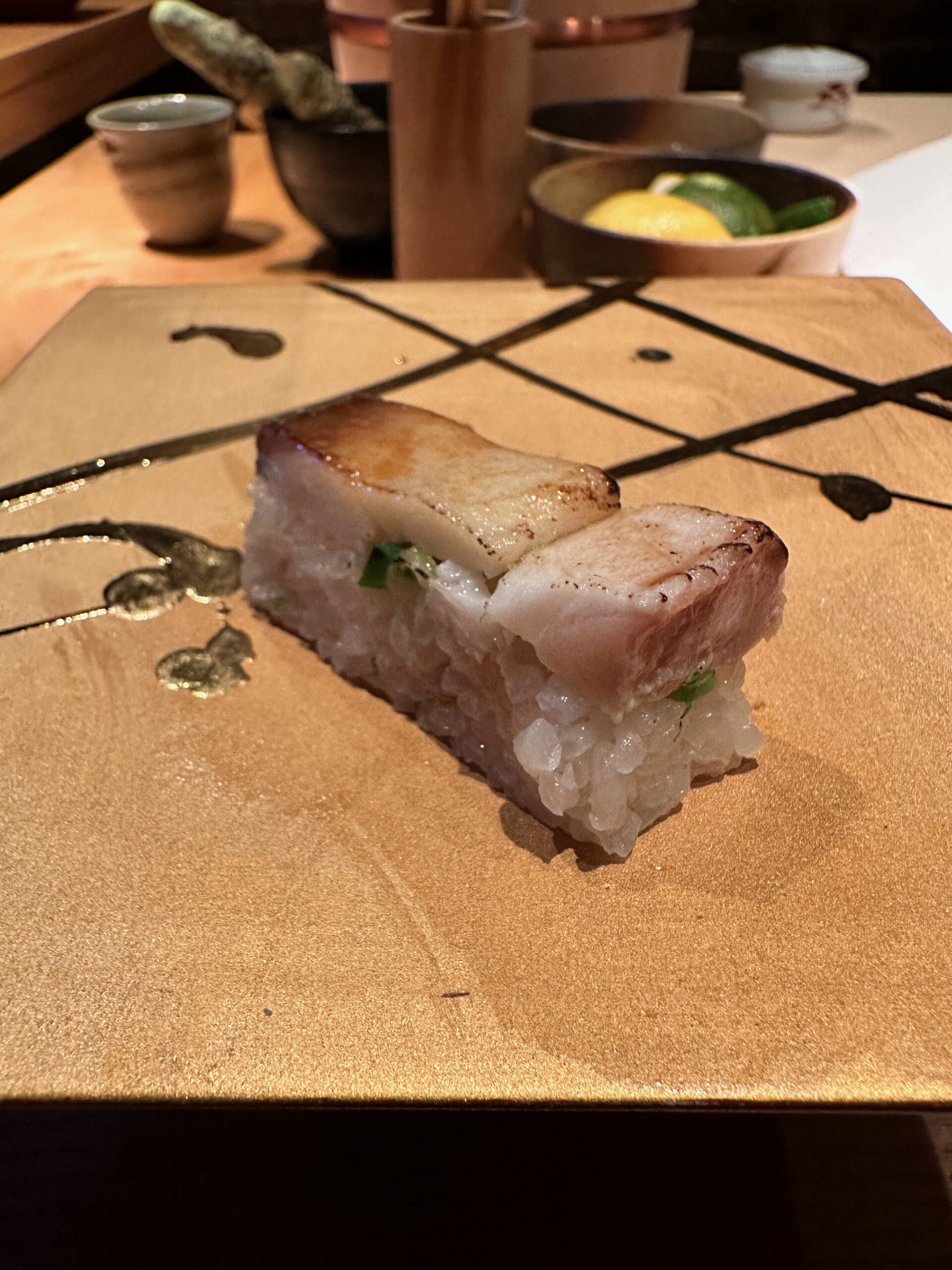
18: Saba Oshizushi
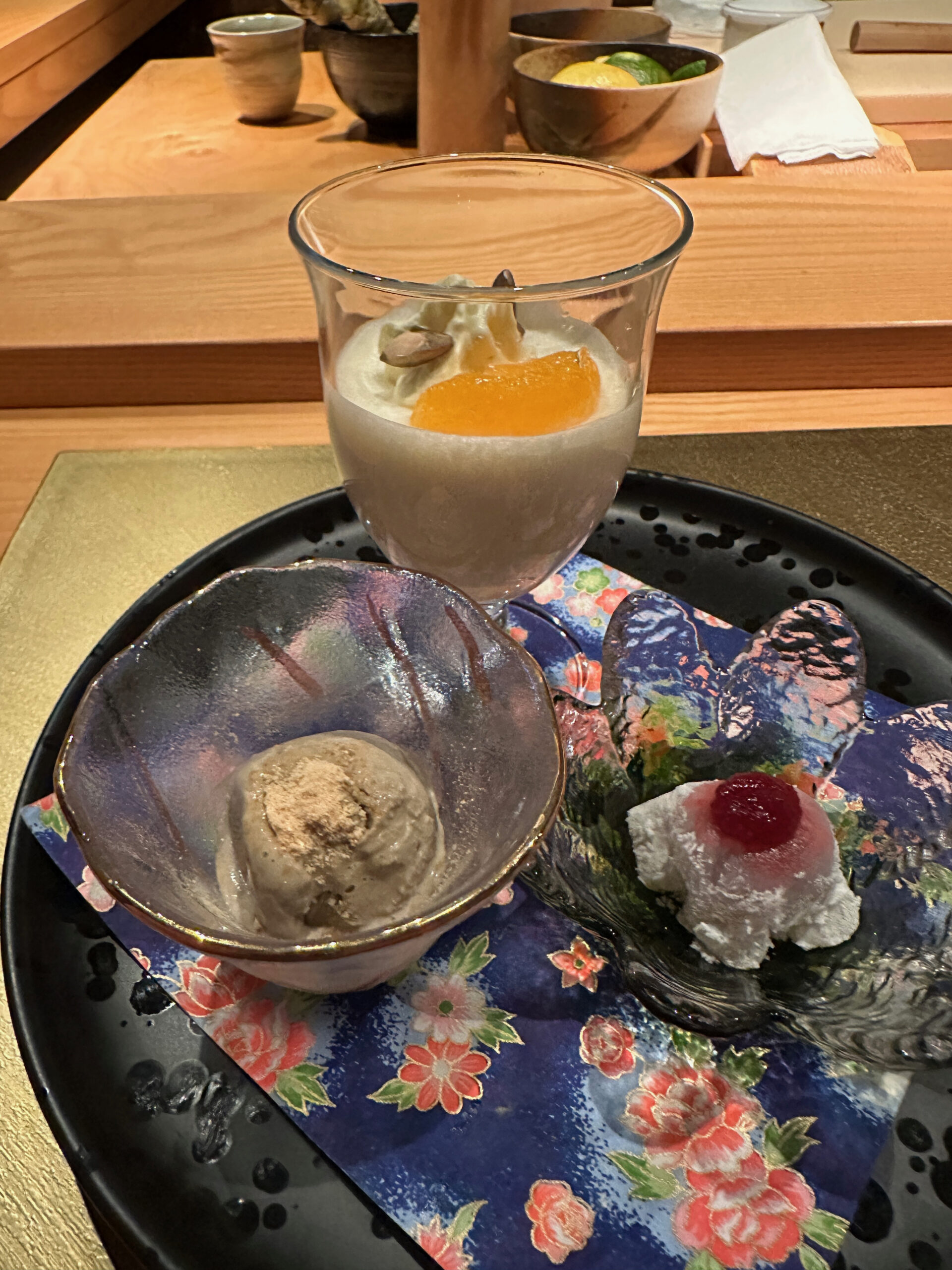
19: Desserts, left to right – Roasted Green Tea Ice Cream, Yuzu pudding with whipped cream and a mandarin orange, blueberry mochi and raspberry sauce
The Verdict
Takeda isn’t immune to the small issues that plague every sushiya in this city, namely the proliferation of finance dudes that speak way too loudly about whatever inconsequential deal they’re working on (you can spot them by the two phones they stack on the counter).
But everything that is in their control, Takeda-san, Satomi-san and their entire team absolutely nail, including the brick backdrop of the sushi counter, Japanese culture with a New York City twist.
This is one of the city’s best sushiya, and given it’s location on the Upper West Side, I wouldn’t be surprised if many teenagers were introduced to their first Omakase right here.
Sounds like a perfect children’s book actually – “My First Omakase”.
Maybe that’s what I’ll do after I run out of restaurants to review (in approximately 2074).
Recommended.
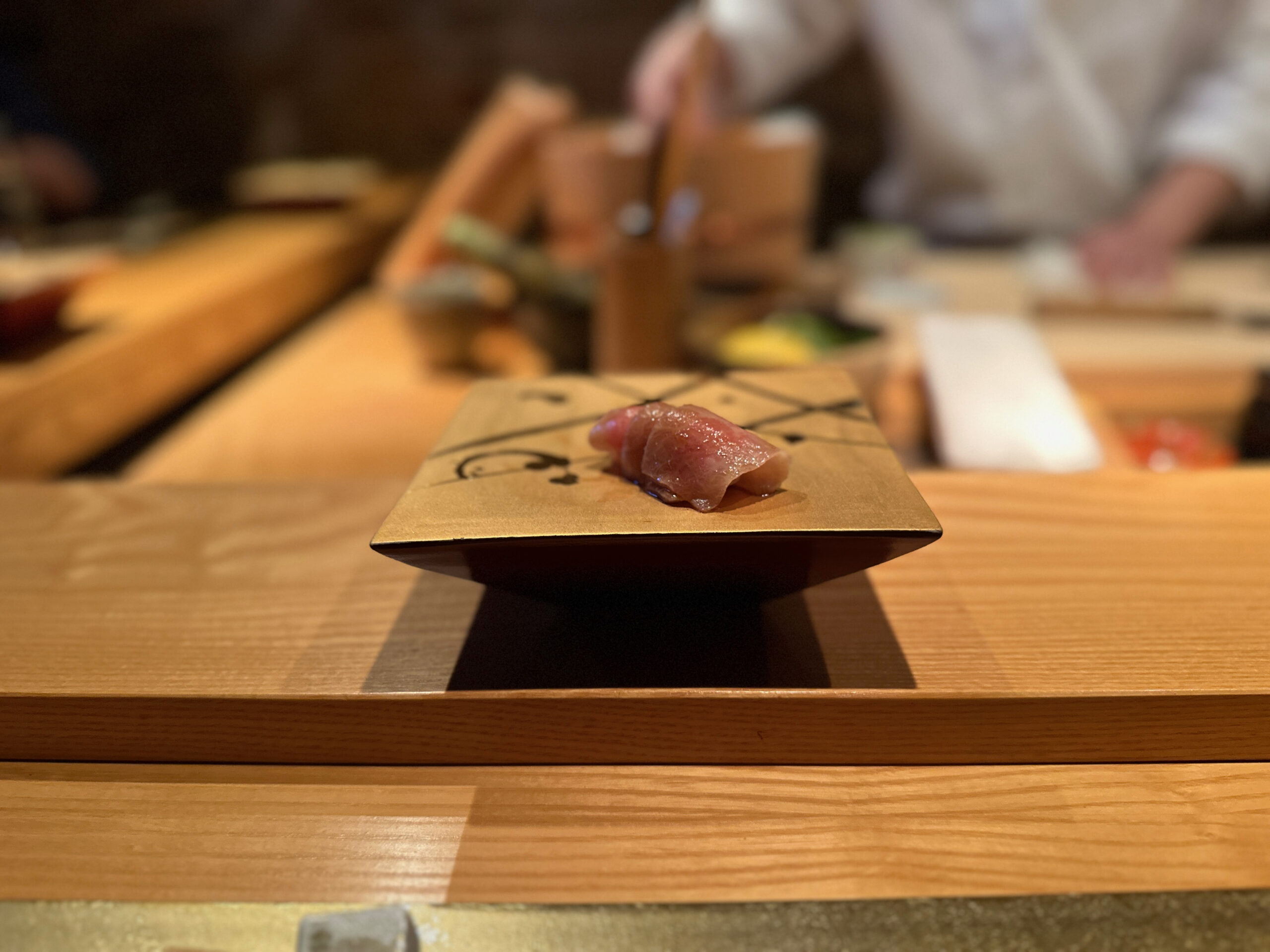
One more of the Kama Toro
